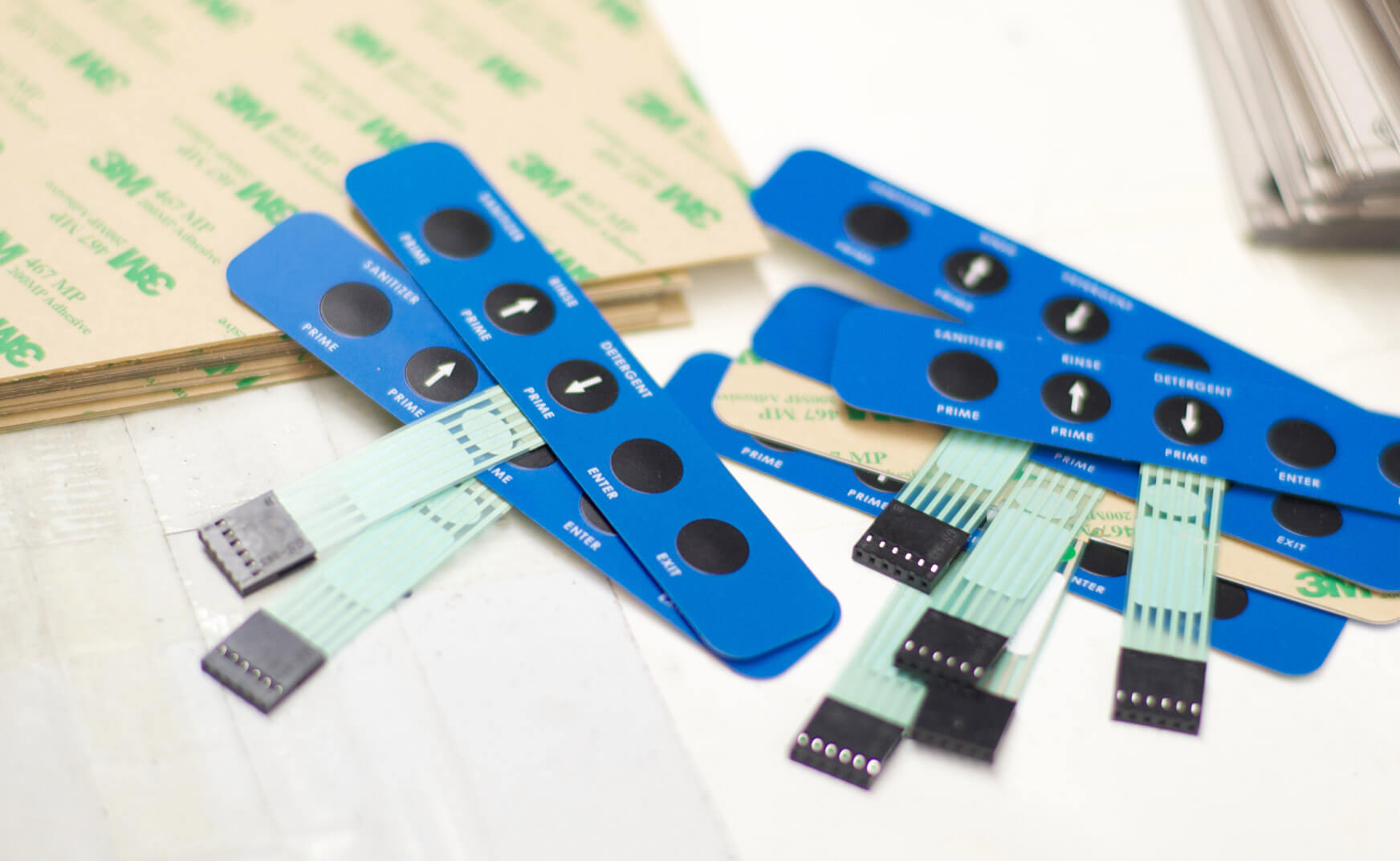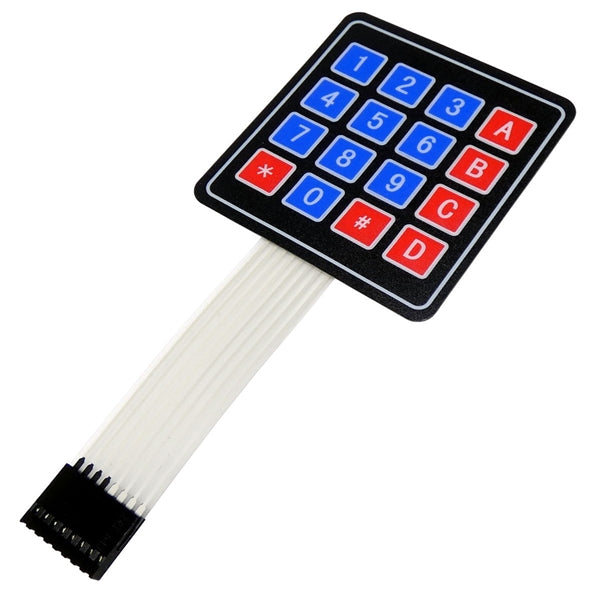Recognizing the Relevance of Membrane Switches in User User Interfaces
Membrane buttons are integral elements in the layout of effective user interfaces, assisting in not just performance however likewise enhancing visual appeal and user communication. As we explore the future fads and numerous advantages associated with Membrane innovation, it becomes clear that these switches are much more than simply elements; they represent a convergence of innovation and usefulness.
What Are Membrane Buttons?

The spacer layer, which has glue homes, enables the separation of the circuit layer from the overlay, ensuring that the button stays in a non-activated state up until pressed. When stress is put on the overlay, it compresses the spacer layer, linking the space and completing the circuit in the underlying layer. This layout not only lowers the physical space needed for standard mechanical switches however likewise boosts the longevity of the gadget, as Membrane switches are typically resistant to dirt, wetness, and other ecological elements.
Commonly located in applications ranging from customer electronics to clinical gadgets, Membrane switches are integral to contemporary technology, supplying a effective and user-friendly user interface that aligns with modern design demands.
Advantages of Membrane Buttons
While various button innovations exist, Membrane Switches deal unique benefits that make them particularly preferable in different applications. One of the primary advantages of Membrane switches is their compact style, which enables for space-saving implementations in devices where genuine estate is restricted. Their slim account not only enhances visual charm but additionally facilitates light-weight building.
Another significant benefit is their resistance to ecological elements. Membrane switches are typically secured versus moisture, dust, and pollutants, making them excellent for use sought after atmospheres, such as clinical tools and industrial equipment. This toughness expands the lifespan of the switch, decreasing maintenance expenses and boosting integrity.
Moreover, Membrane switches can be customized to meet particular style needs, incorporating unique graphics and colors that enhance user interaction. Their tactile feedback options can also be tailored to offer a rewarding individual experience. Furthermore, Membrane switches are cost-effective, particularly in high-volume applications, as they can be produced efficiently.
Applications in Numerous Industries

In the customer electronics field, Membrane buttons prevail in devices such as microwaves, cleaning devices, and remote controls. Their responsive feedback and visual choices find out here now boost individual experience while providing a streamlined, modern appearance. Additionally, automotive manufacturers use Membrane switches in control panel controls and infotainment systems, where room is limited, and customer engagement is essential.
Furthermore, the commercial industry leverages Membrane switches in control panels for machinery and tools, enabling user-friendly procedure in typically rough atmospheres. Their resistance to chemicals and wetness makes certain durability and integrity in these applications. Overall, the versatility of Membrane Switches contributes dramatically to their widespread use, making them crucial in various technological domain names.
Design Considerations for Membrane Switches

When making Membrane buttons, numerous crucial factors to consider must be taken right into account to guarantee optimal capability and user experience. First of all, the choice of materials is important; selecting sturdy, top quality substrates can improve the switch's durability and resistance to environmental elements such as wetness and temperature changes.
Secondly, the design of the graphic overlay you can check here should focus on clarity and convenience of usage. Icons and text must be legible, and the format must assist in user-friendly interaction (membrane switches). In addition, responsive comments is vital; integrating a tactile dome or various other systems can improve the user experience by giving physical verification of activation
Another vital variable is the switch's electrical efficiency. Designers have to make sure that the conductive traces he said are correctly designed to decrease resistance and prevent signal interference. This includes evaluating the called for actuation force and ensuring compatibility with the digital components they will certainly interface with.

Future Trends in Membrane Modern Technology
As innovation proceeds to development, Membrane buttons are poised to advance considerably, driven by technologies in materials and making techniques. One emerging fad is the incorporation of sophisticated products, such as conductive inks and versatile substratums, which improve longevity and minimize the overall weight of Membrane switches. These products not just improve the tactile action yet also permit the style of buttons that can withstand harsher environmental conditions.
Moreover, the assimilation of touch-sensitive technologies is transforming standard Membrane Switches into more interactive customer interfaces. Capacitive touch sensing units installed within Membrane button panels can provide a more responsive and user-friendly individual experience, aligning with the expanding demand for smooth, modern-day designs in consumer electronics.
Additionally, developments in printing methods, such as digital and 3D printing, allow fast prototyping and personalization of Membrane switches. This flexibility allows producers to respond quicker to market demands and consumer preferences.
Lastly, sustainability is becoming a substantial emphasis, with suppliers discovering green products and procedures. As these patterns unfold, the future of Membrane modern technology assures improved performance, aesthetic appeal, and ecological obligation, solidifying their role in advanced interface throughout different industries.
Verdict
In final thought, Membrane Switches stand for an important element in the design of individual interfaces, combining functionality with aesthetic flexibility. Their advantages, including toughness and resistance to ecological elements, make them suitable for diverse applications across various sectors. Thoughtful style factors to consider boost user communication and experience. As improvements in technology proceed, the evolution of Membrane switches is anticipated to further improve interface, driving innovation and enhancing usability in a significantly complex technical landscape.
Membrane switches are essential parts in the design of effective individual interfaces, promoting not only performance yet additionally enhancing aesthetic charm and user interaction.Membrane Switches offer as an essential component in different individual interfaces, facilitating a seamless communication in between customers and digital devices.While various switch innovations exist, Membrane Switches deal distinctive benefits that make them specifically preferable in various applications.Furthermore, Membrane buttons can be tailored to fulfill details layout requirements, incorporating unique graphics and colors that enhance user interaction.In conclusion, Membrane Switches stand for an essential part in the layout of customer interfaces, incorporating capability with visual adaptability.